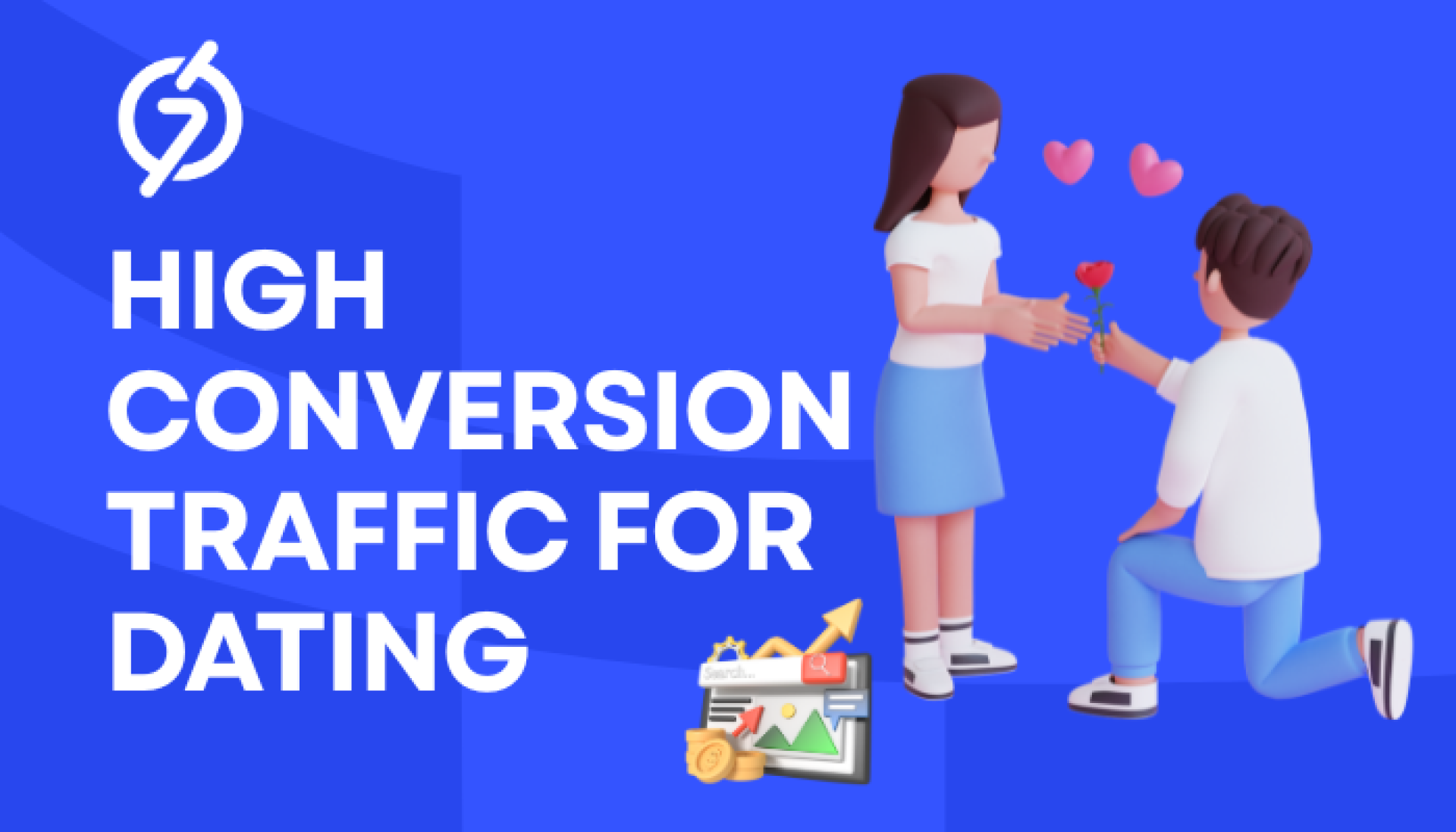Why Overlooking High-Conversion Traffic Can Cost Online Dating Advertisers?

Dating advertising has never been more competitive. In an industry where small margins make a big difference, the ability to spot and capitalise on high-conversion traffic can determine whether your campaigns thrive or fade away. Yet many online dating promoters still let valuable opportunities slip through their fingers—often without even realising it.
The Hidden Value of High-Conversion Traffic
Not all traffic is created equal. While some clicks bring curiosity without commitment, high-conversion traffic represents visitors with a clear intent to take action—sign up, subscribe, or make a purchase. For dating promoters, this often means people actively looking to connect, register for a dating service, or engage with a matchmaking offer.
By overlooking this segment, advertisers risk losing out on the most profitable slice of their audience. The cost isn’t just lost revenue—it’s also higher ad spend wasted on low-intent clicks.
The Pain of Missed Opportunities
Imagine pouring budget into ads that bring plenty of traffic but very few sign-ups. It looks good in a dashboard—thousands of visits, clicks increasing—but when the conversion report comes in, the numbers tell a different story.
Every time you ignore data signals pointing to high-conversion audiences, you’re essentially paying more for less. Over time, this compounds into thousands in lost profit, especially in dating advertising where competition pushes CPCs higher.
The problem isn’t just budget waste—it’s momentum loss. When you fail to tap into your best-converting segments, competitors happily pick them up, nurturing long-term relationships and brand loyalty that could have been yours.
A Personal Insight from Campaign Audits
In reviewing multiple dating advertising accounts over the years, one pattern is clear: most promoters spread themselves too thin. They target broad audiences in the hope of casting a wide net, but ignore the warm pockets of traffic that consistently deliver sign-ups.
For example, one campaign targeting “single professionals” in a specific city was delivering a 5% conversion rate—far above the account average. Yet, because the advertiser didn’t segment traffic by source and demographic, budget allocation stayed flat. The result? High-intent leads trickled in when they could have been flowing in.
This isn’t a rare mistake—it’s a standard one. Many dating advertisers chase volume instead of value.
The Real Reason Advertisers Overlook This Traffic
Most of the time, the issue comes down to:
- Incomplete tracking setups – Not tagging and segmenting traffic sources properly.
- Over-reliance on broad targeting – Trusting platforms to optimise without manual oversight.
- Short-term thinking – Choosing instant clicks over long-term quality leads.
Platforms like Google Ads, Facebook Ads, or specialised dating ad networks can deliver high-conversion traffic, but only if you actively identify, monitor, and nurture it.
How to Identify High-Conversion Traffic in Dating Advertising
Spotting valuable traffic starts with solid tracking and analysis. Look for:
- Source-specific performance – Which ad networks, partner sites, or placements deliver the highest conversion rate?
- Audience intent signals – Keywords with “dating,” “meet,” “find love,” or “serious relationship” tend to convert better.
- On-site behaviour – Longer session times, lower bounce rates, and more page views per visit.
- Demographic match – Age, location, and relationship status that aligns with your offer.
By refining targeting based on these patterns, you shift budget toward the traffic that matters most.
The Cost of Neglecting High-Conversion Sources
Ignoring this traffic means:
- Higher CPA (Cost Per Acquisition) – You spend more per customer than necessary.
- Slower campaign scaling – Without strong conversion foundations, scaling burns budget fast.
- Weaker ROI – More spend, fewer results.
- Lost competitive edge – Competitors will target and convert these audiences first.
In dating advertising, where users’ attention is fleeting, missing this opportunity is like leaving the door open for someone else to walk in and make the connection.
Soft Solution: Shift from Traffic Volume to Traffic Value
Instead of chasing every click, focus on traffic quality. Start with a simple action: review your analytics for the past 60 days and isolate your top 10% of converting traffic sources.
From there, double down on those audiences, keywords, or placements. Even a 20% budget reallocation toward these high-intent clicks can dramatically improve your profitability.
And if you’re looking to experiment with networks that specialise in niche targeting for dating campaigns, you can give it a try – set up a test campaign and track the performance.
Practical Steps to Capture More High-Conversion Traffic
- Implement advanced tracking – Use UTM parameters for every campaign, split by keyword or audience.
- Segment campaigns – Run separate campaigns for your best-performing demographics.
- Refine creatives – Use ad copy that matches the intent of high-conversion audiences.
- A/B test offers – Different landing pages for different intent levels.
- Retarget hot traffic – Keep your brand in front of people who’ve already shown interest.
Case for Long-Term Gains in Dating Advertising
High-conversion traffic isn’t just about today’s sign-ups—it’s about lifetime value. In dating, users who convert early often stick around longer, upgrade to premium plans, or refer friends.
By identifying and prioritising them now, you create a compounding effect—each new high-intent user adds both immediate and long-term revenue.
Final Thoughts
In a market as competitive as online dating, ignoring high-conversion traffic is like walking away from a table where you’re already winning. The advertisers who succeed aren’t just chasing clicks—they’re cultivating relationships with the right audience from the start.
When you focus on traffic that converts, your dating advertising spend becomes more efficient, your ROI improves, and you gain a sustainable competitive advantage.
If you’ve been running campaigns without isolating your best-converting segments, now’s the time to change that.


